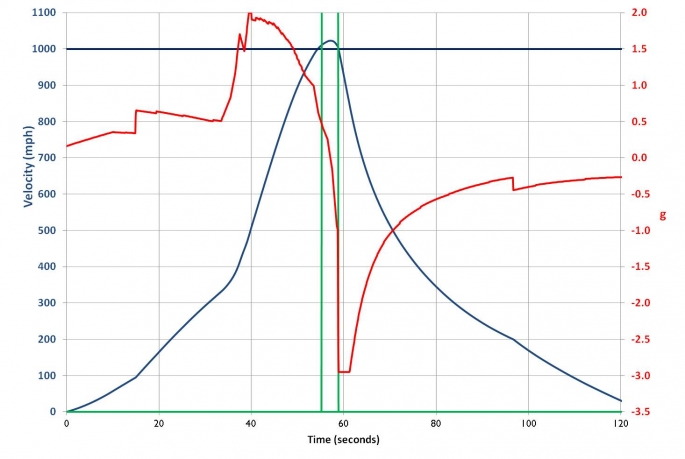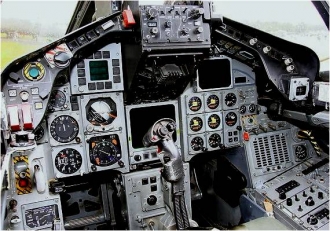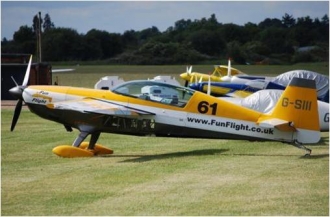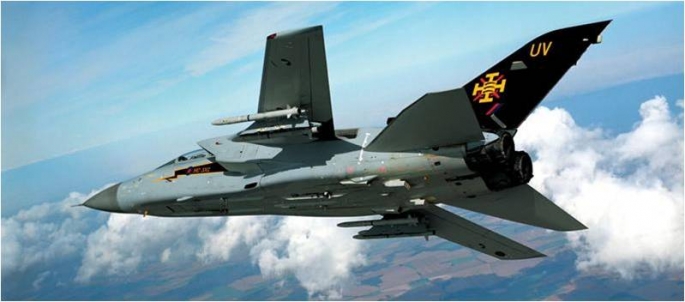‘How do you train for 1000 mph?’. I hear this question a lot – and it’s a very good question. How do you prepare for something that no-one has ever done before? For a Land Speed Record attempt, the training is dictated by how we’re going to operate the Car, and what the driver has to do to achieve that.
Getting BLOODHOUND SSC to 1000 mph won’t be a case of jump in/start engines/floor-it-and-hope. Far from it – we will be conducting a careful and precise step-by-step test programme. Each run will be laid out in detail – target speeds throughout the run, required power settings, expected steering inputs, deceleration points, airbrake and/or brake chute speeds, use of the wheel brakes – and so on. My job will be to deliver each test profile as accurately as I can, while monitoring the Car for any ‘anomalies’ (= problems!) and keeping it straight. That last bit may be quite a handful – the lateral grip from the wheels reduces as we get faster, and the stability changes with power settings and airflow (for more detail, have a look at ‘Steering’). Meanwhile, the huge power from the jet and rocket engines is accelerating the Car at 2G (40 mph per second), before the drag slows it down again at up to 3G (60 mph per second), which is the equivalent of stopping from 60 mph in one second – ouch! Add the screaming noise of a jet intake just above my head, the screech of the shockwaves over the cockpit canopy as we go supersonic, and the ground rush of the desert at 1000 mph, and this is going to be a very intense experience.

The ultimate run profile – 12 miles in 2 minutes
Summarising the above, I’m going to be monitoring/controlling the Car, and conducting an intensive steering task, while subjected to high levels of G and some frankly outrageous noise levels and speeds. Therefore, I need to be able to process a lot of information, cope with the steering and control tasks, endure the G forces and not get distracted by the scary things happening outside the window. Put even more simply, the training is in 3 parts – mental (control and sensing), physical (steering and G tolerance) and psychological (not getting scared!).
So how do I prepare to do all that?
 A busy office
A busy office
The first and most obvious answer is my day-job, as a Fighter Pilot in the Royal Air Force. Processing large amounts of information, and conducting complex control tasks, is something that pilots are trained to do from day one. You can see from the photo that a fighter cockpit is a complicated and busy place to work. Understanding how to do this, and having the spare capacity to think about what’s coming next, is key to the job and what makes it so challenging and satisfying.
Flying jet fighters for the Royal Air Force is not only the best day job in the world – it’s the best possible way to train for something like a Land Speed Record. However, BLOODHOUND SSC is a Car, not an aeroplane, so I will need more than just flying skills. It will be supported and controlled by its wheels, so I need to develop some car-driving skills as well.
This is where the BLOODHOUND Radical comes in. The Radical SR3 is a purpose-built track car with a 0-60 mph time of just 3.1 seconds – proper super-car stuff – and great cornering performance. Let’s dwell on corners for a moment – after all, I’m training to drive in a straight line, so why practice round corners?
Pushing a race car fast on a track involves knowing, or indeed feeling, how much grip you have available, and using as much of it as possible. If the car is comfortably in control, you can push harder. If the car is starting to struggle, then you’re getting towards the limit, where the fast lap times live. If you’re no longer in control, because you’ve run out of grip and/or stability, then you have to recognise it and recover, without panicking. Hence the Radical provides a bit of all 3 elements of training – the mental part comes from developing the ability to sense the car’s performance level, the physical element in using the steering wheel and pedals to retain precise control, and the psychological from not panicking when it starts to go wrong!
As a simple example, here are 2 short clips of video from my race weekend in a Radical. Both are at Brands Hatch, approaching the end of the straight at 200+ kph and braking into the first corner. During qualifying, I get it wrong (locking the back wheels) and about 2 seconds later the car is going backwards(!). The following morning, starting my first race, I make a similar mistake on the same corner. The difference this time is a quicker response (and a bit less panic!), so I can keep the car on track and in the race. It’s this kind of reflex (and psychological response) that makes a difference, whether it’s at 100+ mph on track or 1000+ mph on the desert.
Finally, coping with G forces is part of driving Land Speed Record cars. The G forces can be very disorientating as well as physically demanding – have a look at our article on ‘Physical Effects’ for more detail. The late great Art Arfons, holder of 3 World Land Speed Records in the 1960s, even built his own centrifuge in his back yard to prepare himself for driving his jet cars. I’ve taken the more obvious pilot’s solution, flying regularly in an aerobatic aircraft to practice the ‘BLOODHOUND G Profile’. In simple terms, this starts with a long ‘outside turn’ of negative G, forcing the blood towards my head just as it will be when BLOODHOUND SSC accelerates. This is followed by a sudden reversal to a positive G turn in the aircraft, matching the G forces that will force the blood back down to my feet as BLOODHOUND SSC slows down again. As you can imagine, flying this precise G profile while upside down over the English countryside, monitoring speed, height and G as I go, and frequently talking passengers through the Car’s speed profile at the same time, provides me with a good mental workout as well, adding some more depth to the training.
 High-G Training at Weekends
High-G Training at Weekends
I’m not always successful in completing the whole profile, though – sometimes the passengers begin to pass out before I get to the end, and I have to stop....
A while ago I invited the BLOODHOUND team along to try it for themselves, which involved me flying the profile 8 times in one day. That was a tiring experience, and emphasised another aspect of training – fitness. Driving a Land Speed Record car is not an endurance event, but even a few minutes of concentration and intense physical effort can be very tiring if you don’t train for it. Do it day after day, in a hot desert environment, and the fatigue is cumulative, so being fit becomes even more important. For me, basic cardio-vascular fitness (running or cycling) and strength/core stability (based on gym sessions and weight training) give me the fitness I need to cope with the race car and flying training programmes, and will also leave me fit enough to drive BLOODHOUND SSC when the time comes.
So that’s my training programme to prepare for 1000 mph. It combines the mental skills of flying and being able to sense what a race car is doing, the physical skills to control a high-performance aircraft and race a fast car, and the psychological aspects of remaining calm in a a race car when it’s close to its limit. The background training is still the key for me, though – if you really want to train to drive at 1000 mph, join the Royal Air Force and fly Fighters!



